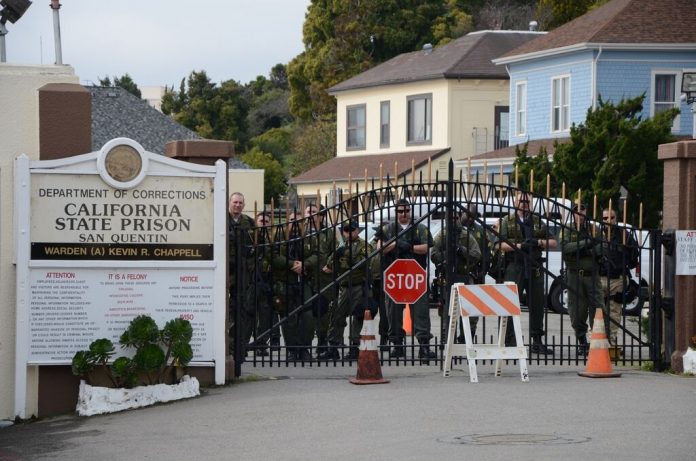Addison Morris
Staff Writer
While Santa Barbara residents prepare for the ribbon cutting at a new county jail where up to 376 inmates will receive “three hots and a cot,” UCSB students continue to be packed three to a double-occupancy room. An additional 44 percent of UC undergraduate students statewide identify as food-insecure. This is the cost of California’s priorities: the state has built 23 new prisons but only one new UC campus since 1980.
Funding for new prisons increases at the expense of education, healthcare, infrastructure, social services, solutions to homelessness, teacher pay, and even police salaries. California can apparently find money to incarcerate an ever-increasing percentage of its citizens but not to educate them. The UCs used to be tuition-free for citizens of California until 1970, after all. It stands to reason that they could be free again if California diverted money away from the prison system, which began growing rapidly in the seventies.
According to the Public Policy Institute of California, “Higher education spending accounted for 18% of the state budget in 1976–77, but by 2016–17 higher education funding had fallen to 12% of the budget. These funding cuts have been felt most strongly at the University of California, where funding per full-time-equivalent student fell from slightly more than $23,000 to about $8,000.”
While full-time UC students receive only $8,000 each, prisons are getting an annual $75,560 per inmate as of last year. The Los Angeles Times wrote that, “Gov. Jerry Brown’s spending plan for the [last] fiscal year … include[d] a record $11.4 billion for the corrections department.”
Why is the government so clearly prioritizing inmates over students — or prisons over a myriad of other crises, for that matter? As the answer almost always is, follow the money.
In the eyes of capitalists, prisons provide cheap labor and expendable bodies that universities don’t. Just last year, 3,800 California inmates worked at only $1 an hour to combat raging wildfires. Moreover, Linda Evans and Eve Goldberg, in their 1997 pamphlet “The Prison-Industrial Complex and the Global Economy,” point out that “prisoners do data entry for Chevron, make telephone reservations … and circuit boards, limousines … and lingerie for Victoria’s Secret, all at a fraction of the cost of ‘free labor.’”
In 2014, BuzzFeed News reported that Lawyers for California Attorney General Kamala Harris “argued in court this fall against the release of eligible nonviolent prisoners from California’s overcrowded prisons—because the state wanted to keep them as a labor force.” Instead of releasing deserving inmates, California is simply opting to build more prisons to solve overcrowding issues.
Angela Y. Davis, in her book “Are Prisons Obsolete?” also underscores that prisons began to proliferate as crime rates were dropping because corporations began using prisoners’ labor. Indeed, crime rates have been dramatically plunging since the 1990s, according to data from Pew Research Center published this January. Yet, penitentiaries continue to receive funding to imprison more people because of their profits.
Davis argues that the behemoths who feed on an unending supply of prisoners have scared the general public into supporting their initiatives, convincing the country that it must rid itself of an “increasing” amount of murderers, rapists, and robbers. The investors created what UCSB’s Dr. Felice Blake, who specializes in prison literature, refers to as a “moral panic.”
“From 1990 to 1988, homicide rates dropped by half nationwide, but homicide stories on the three major networks rose almost fourfold,” Davis contended. Although TBL rarely covers homicide cases, most newsrooms continue to subscribe to the mantra, “If it bleeds, it leads,” thereby creating heightened fears and exaggerated perceptions of violence. According to Pew Research Center data, these fears and perceptions are completely out of tune with cold, hard statistics.
Contrary to popular belief, mass incarceration and prison expansion are not problems of the past, even though high crime rates certainly are. As mentioned, a new Santa Barbara County jail will open next year. Just last year, the government awarded $270 million to nine other California counties for construction and improvement projects on prisons.
In sum, the discussion about prison expenditures is as tired as our country’s history of abusing ordinary citizens for the benefit of the top one percent — not because it’s irrelevant, but because it seems impervious to change.
I can offer no sweeping solution that will fix every one of the dire problems with America’s prison system because none exists. For now, I simply write strongly in favor of educating our citizens instead of incarcerating them as more funds continue to go to prisons’ maintenance and expansion at the cost of support to schools. If only 20 percent of the annual $75,560 the government allocates to each prisoner was redirected to each UC student, tuition could be free again.


















Why did UCSB recruit a failure like Klawunn?
Comments are closed.